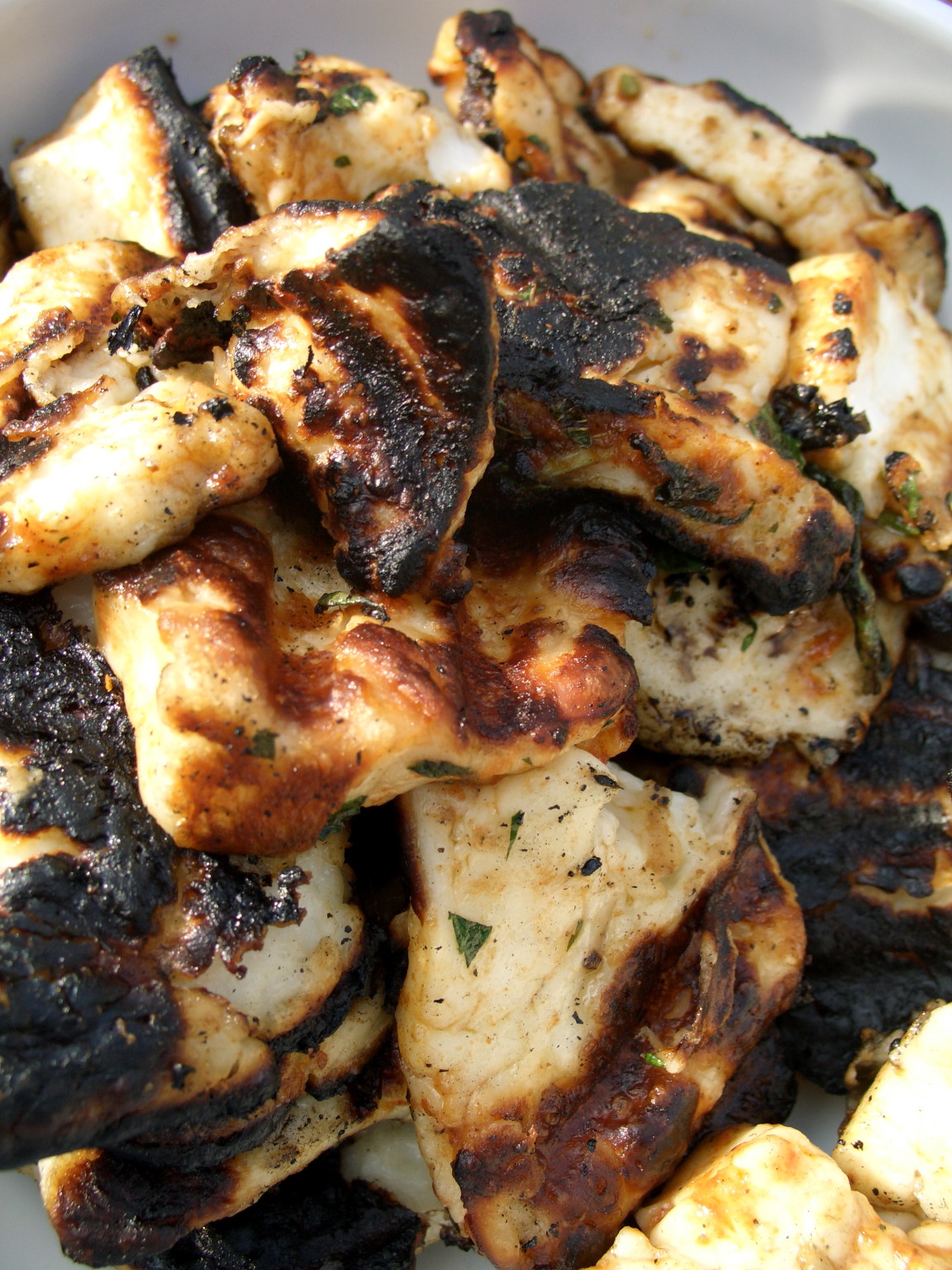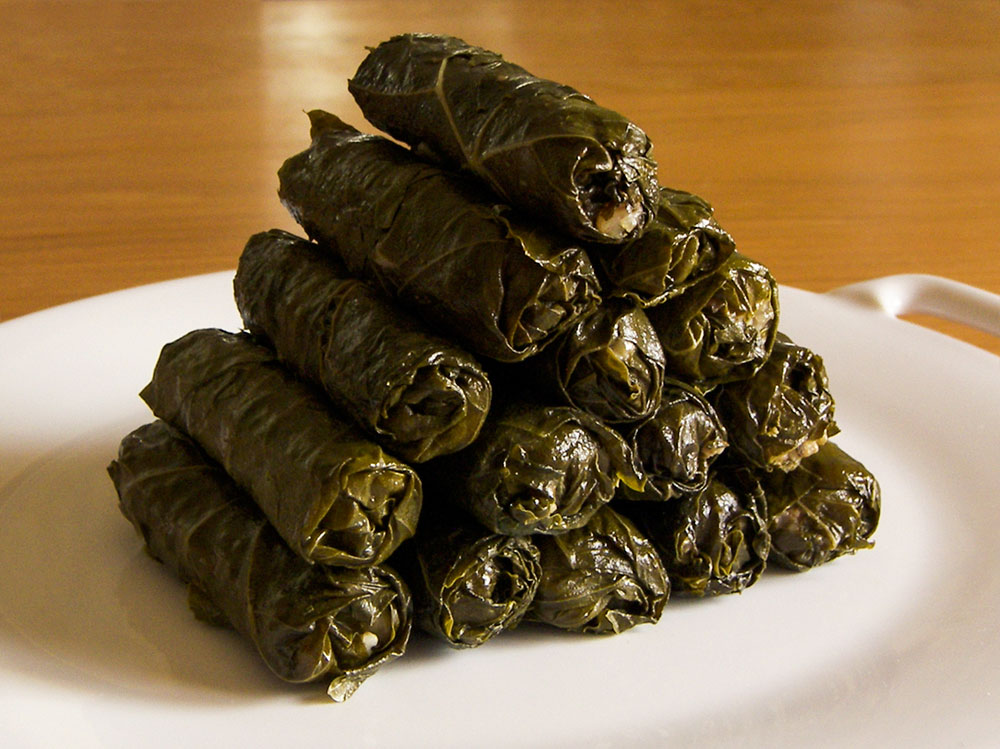#3 Cyprus: The Thin Green Line
Cyprus is a country with a rich history of being occupied and controlled by other powers for the last 3000 odd years. Empires ranging from the Persian, Ottoman, Roman, Byzantine , Egyptian, Assyrian, and many more have made their home on this asymmetrically shaped island. Historic power-grabs aside, this nation has been dealing with their own modern, internal divisions: those between the Greek Cypriots and the Turkish Cypriots.
The Greek Cypriots are the majority and represent over three-fourths of the population. They occupy the southern portion of the island. The northern portion of the island is occupied by Turkish Cypriots. These groups of people are divided neatly through the capital Nicosia by the famous "Green Line". These two areas form de facto states, each with its own government, laws and, of course, cuisines.
The tensions and divisions between these two peoples have been attempted to be resolved through a flag. It happens to be the national flag of Cyprus, created by a Turkish Cypriot school teacher and adopted by the then president, Mikhaïl Khristodoulos Mouskos, in 1960.
This is the flag of Cyprus:
 This flag, taken within the context of its creation, is a clear peace-map. Firstly, there are the clues taken from the background color: white. Typically, a white flag is the flag of truce, ceasefire and surrender. The creators of this flag were clearly signalling a ceasefire.
This flag, taken within the context of its creation, is a clear peace-map. Firstly, there are the clues taken from the background color: white. Typically, a white flag is the flag of truce, ceasefire and surrender. The creators of this flag were clearly signalling a ceasefire.
But where?
That next, logical question can be answered by looking at the center of the flag, where the observer can see a clear representation of the geographical outline of the island of Cyprus. The observer will note that there are no dividing lines, as the green one that split the country in two for years. But why is the country gold? Isn't that signaling to would-be instigators that there are material gains to be made by occupying such a country? Oh, no! The country is copper, and not gold. The word copper is one of the (disputed) origins of the word Cyprus, and the country is not awash in gold but was one of the original bearers of copper.
So, the flag calls for a ceasefire in Cyprus, but what about the final olive branches? Oh, yes! They are a final call for peace.
One can read the map of Cyprus as follows: Ceasefire in Cyprus with Peace!
So, drawing from the ameliorating attempts of the flag, we too decided that we would make a meal that drew from both the Turkish Cypriot and the Greek Cypriot populations, and that was generally eaten by both populations.
We start out with a Halloumi cheese dish that was originally Greek Cypriot, but that is now, as we understand it, generally enjoyed by people throughout the island. This dish is a wonderfully simple appetizer and is served with warm pita bread.
We then moved to the northern quarter of the island for some Turkish Cypriot influence. From there, we cooked a Yalanci Dolma, which is a rice dish wrapped in grape leaves and then boiled in water. The dolma dishes are typically filled with meat, but this dish is vegetarian. Thus the name Yalanci Dolma literally means "stuffed liar".
We then move on to a Greek Cypriot dish that is said to be enjoyed throughout the island. For this, we cooked a Cyprus Kleftiko. This is a slow-cooking leg-of-lamb dish that, according to some websites we found, originated when Greek resistance fighters stole legs of lamb from their Turkish foes. After stealing the lamb, they would have to cook it slowly in the ground to minimize smoke so that the Turkish forces would not find them. The militant origin of this dish has since been replaced by universal Cypriotic love for Kleftiko. There is also a thief version of this tale.
We end the meal with a potentially inflammatory drink selection, a Cypriot Brandy Sour, an alcoholic drink that would most likely not be enjoyed by the Muslim Turkish Cypriot population. However, we were assured by this website that it was the, "national drink of Cyprus". Just goes to show what a majority can do to a minority in a democracy.
Let's make peace through food!
Grilled Halloumi Ingredients:
Ingredients:
A block of Halloumi cheese
A spritzing of olive oil
A sprinkling of salt
A bit of oregano A grilled lemon A number of pieces of pita bread
Equipment:
A broiler or a grill
Tongs
Method:
Take the Halloumi cheese, which should be easily found at your local Greek super market, and cut it into a block that is approximately the size of a normally stuffed male wallet. Sprinkle with olive oil, salt and oregano and place it in the broiler/on the grill. While this is grilling/broiling, also place the pita bread and the lemon on the grill/in the broiler. Allow the cheese to grill until it turns generally soft, but not too soft. It should be soft enough that it doesn't slide down the cracks of the broiler/grill and that it can also be picked up using thongs. When everything has finished cooking, remove the lemon, halve it and sprinkle the juice over the cheese. Cut the Halloumi into small chunks, the pita bread into wedges and serve as a wonderful appetizer.
The original recipe can be found here.
Yalanci Dolma Ingredients:
Ingredients:
Grape leaves, preferably fresh but probably canned
A handful of finely chopped onions
A handful of finely chopped scallions
A handful of olive oil
A handful of rice
A pinch of salt and a pinch of pepper
Half a handful of dill, finely chopped
A quarter handful of mint, finely chopped
Juice from a couple of lemons
Equipment:
A bowl
A large pan
A lid that fits within the large pan
A lid to cover the large pan
Method:
Take the onions, scallions, olive oil, rice, salt, pepper, dill and mint and combine in a bowl. Then, set up a place to roll the Dolma. Take the grape leaves with the stem-end pointing away from you. Place a sufficient clump of the rice mixture in the middle of the leaf. Roll the point closest to you over the clump of rice, then the two points of the leaf that are just to your left and right.
Take your pan and cover the bottom with leaves. This will prevent burning during the cooking process. Place your rolled Dolma around the outside of the pan in a circle with each roll pointing to the center of the pan in a tight spoke-like fashion. You should be able to cover the outside of a sufficiently large pan with Dolma. Then, place the lid or plate in the center of the pan so that it presses down the Dolma and prevents them from splitting. There should be enough room for you to cover the Dolma with water and the lemon juice.
Let cook until the rice is cooked through. This will probably take about 20 minutes (or more). Do not let the water boil too vigorously, as it could damage the grape leaves.
You can serve them warm or cold.
The original recipe was found here.
Cyprus Kleftiko  Ingredients:
Ingredients:
Enough lamb to feed the people you are serving. The following ingredients are proportioned for three lamb shanks.
One onion, quartered
Two tomatoes, halved
Two heads of garlic with skin on, left whole
Lots of fresh rosemary
Four potatoes, quartered
Three or four carrots cut into chunks
A mug of chicken stock
A mug of olive oil
Salt and pepper to taste
Equipment:
One Le Creuset 4.5 qt oven pan, or anything else that can be covered and put in an oven
A knife
Method:
Find wonderful lamb. This can be difficult, but I suggest going to a Mediterranean market in an urban area and asking where they buy lamb. In our area, it happens to be an Iranian market on the outskirts of town. The original recipe called for a leg of lamb. Seeing as how we were not feeding a Cypriot army, we, instead, bought three lamb shanks.
Cut slits in the lamb that you have purchased and fill them with rosemary. Generously rub the lamb with salt and pepper. Then, fill your pot with the chicken stock and the olive oil. Place your lamb in the bottom of the pot and cover with potatoes, garlic, onions, tomatoes and carrots. Sprinkle the top of the vegetables with salt and pepper and any remaining rosemary.
Bake for a very long time at 320 degrees. Check after about 1.5 hours with a thermometer to see if you are finished. Check again every 20 minutes.
The original recipe can be found here.
Brandy Sour Ingredients:
Ingredients:
Brandy, preferably Greek or Cypriot
Lemon
Angostura bitters
Soda water
Equipment:
Glass
Method:
Find a nice, Greek or Cypriot brandy. For us, we found a Metaxa “Classic” at our local liquor store. Squeeze the lemons and fill the glass with two parts brandy, one part lemon and two parts soda. Top with angostura bitters, which were originally created by Dr. Johann Gottlieb Benjamin Siegert, a Surgeon General in Simon Bolivar's army in Venezuela. The recipe remains a secret today.
Shake lightly and garnish with citrus.
The original recipe can be found here.
Review:
We give the Halloumi Grilled Cheese 4 globes because it was absolutely delicious, easy to make and, when served warm with grilled pita bread, simply melted in your mouth. We’ll definitely be making this simple appetizer again.

We give the Yalanci Dolma 3 and ½ globes out of five. There was some disagreement about what score this should have received by the group and we compromised. Some felt it deserved a four, and others a three. The higher scores were given because it was a refreshing, light snack that could be easily stored for later. The lower scores were given because it was a little heavy in olive oil, difficult to make, and may incorporate a bit too much dill. We didn't end up using mint in our Yalanci Dolma and future forays into dolma making will definitely include the mint and perhaps reduce the amoung of oil used.
We give the Cyprus Kleftiko a full 4 globes because it turned out beautifully. Due to the it was cooked for such a long time on such low heat, the rosemary flavor had a wonderful opportunity to incorporate itself with the lamb.
Additionally, some of us were quite skeptical that the potatoes, onions, tomatoes and carrots would be flavorful, as they were simply baked on top of stock and oil as opposed to in the stock and oil.
Our fears were unfounded. When served, the lamb took center stage on the plate and was surrounded by the vegetables. The gravy from the lamb, stock and oil was then poured over everything. This was just enough seasoning to make the dish irresistible. Finally, the garlic cloves that were left un-touched made a perfect, butter-like spread for some grilled pita bread served on the side.

1 comment:
Delightful!
Post a Comment